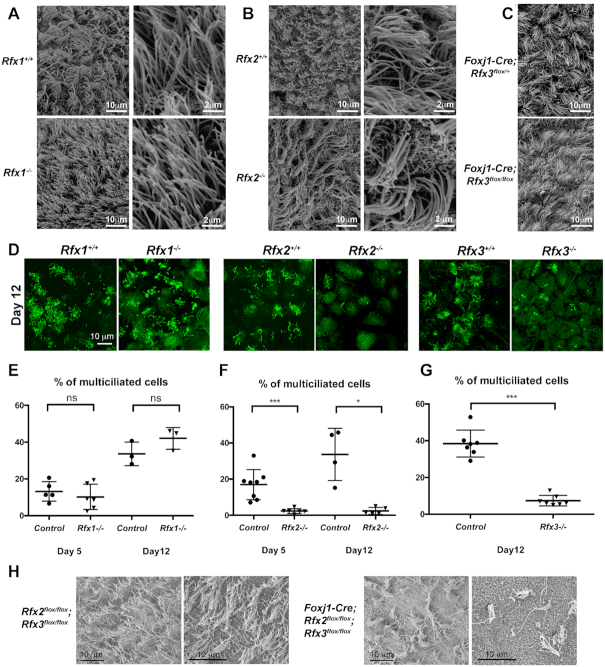Figure 1.
RFX2 and RFX3 play critical roles in ependymal cell ciliogenesis. (A–C) Lateral ventricles of P15 brains were analyzed by scanning electron microscopy for Rfx1−/− (A), Rfx2−/− (B) or conditional FoxJ1-Cre;Rfx3flox/flox mice (C). Brains from Rfx1+/+, Rfx2+/+ or FoxJ1-Cre; Rfx3flox/+ mice were used as controls, respectively. No alterations in the number of ciliated cells or in the number and size of cilia were detected in the mutants. (D–G) In vitro differentiated ependymal cells derived from lateral brain ventricular progenitors at E18.5. (D) Representative images of multiciliated ependymal cell cultures at 12 days post serum deprivation stained for acetylated tubulin (green). (E–G) Graphs represent the percentages of multiciliated cells observed after 5 or 12 days of serum deprivation. No significant differences were observed between control and Rfx1−/− cells (E), whereas strong reductions in the number of ciliated cells were observed for Rfx2−/− (F) and Rfx3−/− (G) cells. *P< 0.05; ***P< 0.001; ns, not significant. (H) Lateral ventricles of P15 brains were analyzed by scanning electron microscopy in conditional double-Rfx2-Rfx3 deficient mice generated using the Foxj1-Cre strain. Compared to control ependymal epithelia (left), a major reduction in the number of ciliated cells was observed in ependymal epithelia deficient for both Rfx2 and Rfx3 (right). Two representative images are shown for each genotype.

